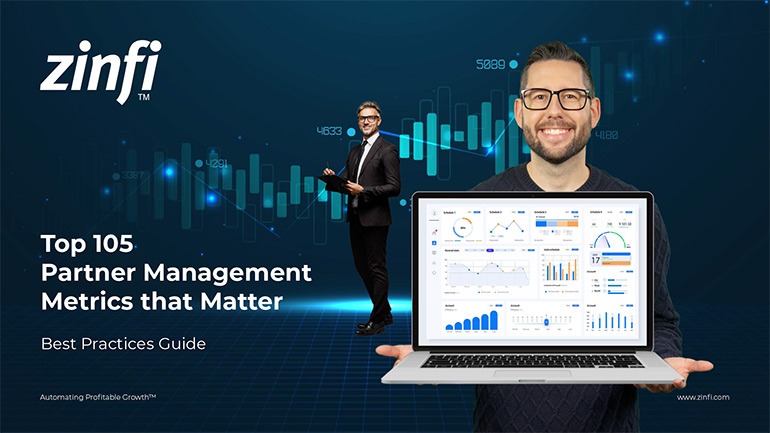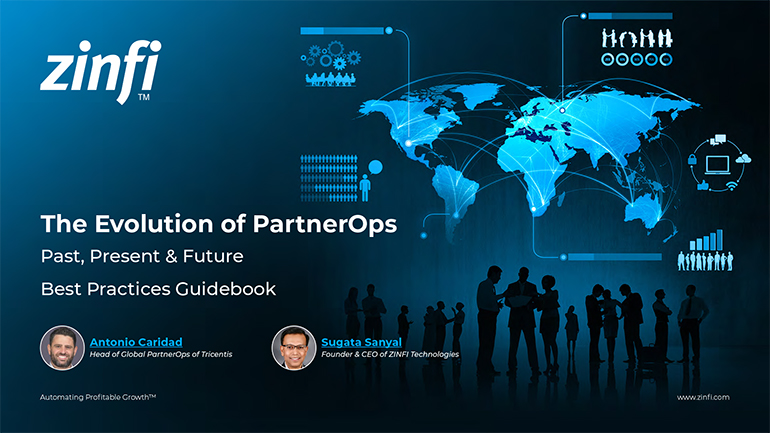Glossary - What is - Ecosystem Optimization Software
What is Ecosystem Optimization Software?
Ecosystem optimization software is a technology platform to enhance efficiency, performance, and collaboration within a business partner ecosystem. This software streamlines operations by providing onboarding, enablement, communication, performance tracking, and marketing management tools. By centralizing data and automating workflows, ecosystem optimization software enables businesses to align partner activities with strategic objectives and maximize ROI.
In partner ecosystem management, this software is vital in scaling operations, fostering transparency, and creating a cohesive network of partners, such as resellers, distributors, and service providers. Integration with other business systems, such as CRM (Customer Relationship Management) and PRM (Partner Relationship Management) platforms, allows businesses to gain actionable insights and optimize ecosystem performance holistically.
Key Takeaways:
- Streamlined Partner Onboarding: Ecosystem optimization software automates partner information, ensuring a seamless onboarding process that accelerates partner readiness.
- Enhanced Collaboration and Communication: Integrated communication tools enable businesses to share updates, gather feedback, and engage partners through announcements, messaging, and collaboration platforms. Check out Jay McBain’s insights on Partner Collaboration on ZINFI’s website.
- Data-Driven Performance Insights: This software tracks partner performance, campaign ROI, and operational metrics, providing businesses with real-time insights to refine strategies and drive success.
- Marketing and Sales Enablement: Ecosystem optimization software provides access to co-branded marketing materials, sales guides, and training resources, equipping partners to generate demand and close deals effectively.
- Incentive and Compliance Management: Businesses can use the software to manage incentive programs, rewards, and compliance tracking, fostering accountability and motivating partners to achieve business objectives.
Summary of Key Takeaways:
Ecosystem optimization software empowers organizations to manage partner networks efficiently by automating workflows, enhancing communication, and providing actionable insights. These tools ensure that partners are aligned with organizational goals, driving mutual success. ZINFI’s ecosystem optimization solutions are customizable and scalable, addressing the unique needs of businesses across various industries.
Key Examples:
- Automotive Manufacturing: Automotive manufacturers use ecosystem optimization software to track dealership performance, monitor inventory, and ensure alignment with corporate sales and service goals.
- Consumer Electronics: Electronics brands leverage this software to provide training, co-marketing resources, and sales enablement tools to retail partners, improving product launches and market penetration.
- Energy Production: Energy companies use optimization software to coordinate contractor activities, track compliance, and monitor project timelines, ensuring operational efficiency and regulatory adherence.
- Financial Services: Banks and insurance firms employ this software to manage broker and advisor networks, providing tools for lead distribution, performance tracking, and compliance management.
- Food and Beverage: Ecosystem optimization software in the food and beverage industry helps businesses track distributor performance, monitor supply chain efficiency, and manage co-branded marketing efforts.
- Healthcare Services: Healthcare providers rely on this software to track supplier compliance, monitor distributor performance, and manage regulatory requirements, ensuring seamless operations.
- Information Technology: IT companies use ecosystem optimization software to support resellers and integrators through deal registration, certification programs, and marketing automation, driving channel productivity.
- Pharmaceutical Development: Pharmaceutical firms use this software to track distributor activities, ensure compliance with regulatory standards, and promote new treatments through targeted marketing campaigns.
- Retail Industry: Retailers leverage ecosystem optimization software to manage supplier relationships, track inventory levels, and measure the effectiveness of promotional campaigns, ensuring operational consistency.
- Telecommunications: Telecom providers use this software to monitor reseller activities, track customer acquisition, and manage training and incentive programs, driving growth and service quality.
Conclusion:
Ecosystem optimization software is powerful for organizations looking to enhance their partner networks’ efficiency, collaboration, and performance. By automating processes, providing actionable insights, and enabling seamless communication, this software ensures that partner activities align with business objectives and foster mutual success.
Industries such as automotive, IT, and healthcare illustrate the transformative potential of this software. Automotive manufacturers use it to enhance dealership operations, IT firms rely on it to support resellers, and healthcare providers use it to ensure compliance and improve supplier relationships.
ZINFI’s ecosystem optimization software offers robust features tailored to the unique challenges of managing diverse partner networks. By adopting these tools, businesses can improve transparency, optimize partner contributions, and achieve sustainable growth. In today’s competitive market, ecosystem optimization software is essential for building a high-performing partner ecosystem.
Associated Keywords:
- Partner Optimization Tools
- Channel Ecosystem Management Software
- Partner Network Performance Solutions















